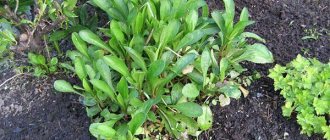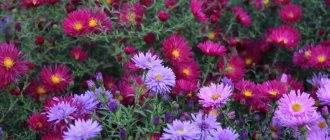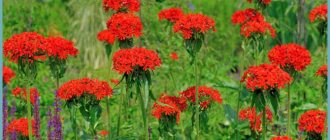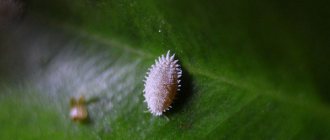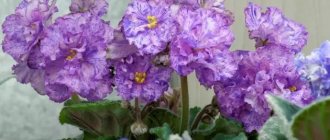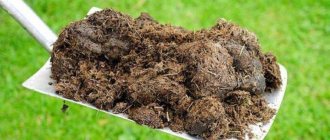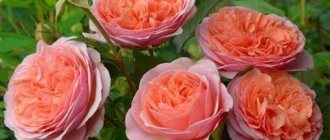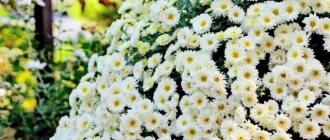Description and features
The herbaceous plant of the Asteraceae family is interesting for its baskets of finely cut petals. The annual and perennial plant has a tall, erect stem reaching a height of 80-100 centimeters. The stem branches in the middle. Thin lanceolate leaves of cornflower are covered with hairs below.
Cornflower blooms all summer. During this period, the marginal asexual petals are colored blue, white, and red. In the middle of the basket they are tubular and dark purple.
The garden type of cornflower has a greater variety of colors than the field type. Breeders have developed varieties that have not only a simple flower, but also double and semi-double flowers.
If in the wild you have to fight cornflower like a weed, then in the garden bushes take their place in landscape design. It is interesting that the crop grows everywhere, as it is unpretentious to growing conditions, climate, and soil.
Cornflower varieties for growing in the garden
The most suitable inhabitants of garden plots are the following varieties of flowers:
- Mountain - has strong straight stems that usually grow up to 30 cm. The buds bloom in May. It is especially valued by gardeners because of its simplicity and ease of care.
- Bleached is a perennial tall variety (up to 1 m), blooms in June-July, upon completion of this process it pleases the eye with lush spherical green bushes.
- Primary gerbera is a two-year-old plant, no more than 40 cm high. The inflorescences are usually cream or pink in color, and the leaves have a feathery shape.
- Fisher's cornflower is a low variety, a characteristic feature of which is the peculiar pubescence of shoots and leaf blades. The flowers are pale yellow and soft pink.
- The eastern one is one of the most ancient representatives of the hairworm species; it was discovered back in 1759. It reaches a height of one meter.
- Blue cornflower is an annual herbaceous plant with an erect stem up to 80 cm in height. The leaf blades are green-gray, alternate, pubescent. The flowers are azure or blue.
- Yellow is a perennial cylindrical bush up to 1 m tall, has bright yellow flowers and oblong-lanceolate leaves on straight and thick stems.
- Meadow is a herbaceous perennial plant up to 80 cm tall, completely covered with a grayish or cobwebby cover, the baskets are lilac-pink, occasionally white.
Rate this post
Kinds
Decorative perennials differ little in the structure of the inflorescence. The differences lie in the splendor of the petals, their color, and the height of the stem.
Blue
A plant with a branched, rough stem is considered a weed. It grows in Europe, especially likes to be in fields where cereals grow. Flower baskets with blue petals at the edges are wrapped in filmy plates laid in tiles. In the middle of the inflorescence there are tubular petals of a purple tone. It is this type of cornflower that is used for medicinal purposes.
White
A rare species of cornflower is listed in the Red Book. It is found in the wild in the mountainous areas of the Caucasus, Iran. Dense bushes with a height of 30 to 55 centimeters have dissected leaves. The leaf blades are dark green above and whitish below. The diameter of the inflorescences reaches 4 centimeters.
Mountain
This type of herbaceous plant is found in the mountains of Western Europe. The flower has an erect stem without lateral branches, the height of which is from 30 to 70 centimeters. Whole leaves of lanceolate type are collected in a basal rosette. The stem is crowned with a basket with an inflorescence diameter of 6 centimeters. Externally, mountain cornflower is similar to blue cornflower, but it is a perennial herb, unlike field grass.
Yellow
The bright yellow inflorescences of the plant are quite large, up to 7 centimeters in diameter. The perennial blooms from July to August. It can become a decoration of the site thanks to its lush bushes. In nature, yellow cornflower is found in the territory from the Urals to the Far East.
Large-headed
The cornflower is called Grossheimia macrocapitatum. The inflorescences have the shape of a ball, they are large, and the bottom is wrapped in scales of green plates. Cut flowers last a long time and can become a decoration for a room.
Oriental
For a perennial:
- short rhizome;
- hairy stem 40-90 centimeters high;
- pinnately divided leaves on long petioles;
- a basket of inflorescences with a diameter of 3 centimeters;
- intense yellow color of the corolla.
The species grows across the steppes, reproducing by seeds.
Lugovoy
The weed is found along roadsides and forest edges. Lilac-pink inflorescences-baskets consist of 2 types of flowers. The edges of the petals are asexual, funnel-like. In the center are modest tubular ones, which are needed for cornflower propagation.
Field
The herbaceous annual or biennial is used medicinally. Its blue or blue heads are found in fields sown with cereal crops. As the weed grows, it destroys part of the crop. Cornflower is actively used in folk medicine.
Whitened
The flower is famous for the beauty of its petals and leaves. Bright pink flowers sit solitary on tall stems. The basal leaves are collected in a rosette. The plates are green on top and covered with whitish felt underneath. Designers value cornflower for the neatness of the bush, its sphericity and silvery shades.
Spreading
The plant's stem branches at the very base. The bush is distinguished by small baskets of flowers. The color of the petals is pale pink or white. Cornflower is a biennial crop and blooms from June to autumn. It grows abundantly in vacant lots, near railroads, and near highways.
Pink
The perennial reaches a height of one meter. Large flowers of rich pink color appear on top. A special feature is the swelling of the stems under the inflorescences.
American
An ornamental cold-resistant species grows in the prairies of North America. On erect stems 1 meter high there are single flowers with a diameter of up to 8-10 centimeters. The color of the petals is pale lilac.
Sowing
Blue cornflower is a sowing species. It tolerates wintering well and is easy to care for.
Caring for mountain cornflower
Mountain cornflower is tall, 40-60 cm. Based on this, in most cases it is placed in the background or in the center of the flower bed. It is possible to tie up lashes with flowers. In dry weather, the area where the mountain cornflower grows is watered. This also applies to seed germination. Since they need watering more than adult plants.
After the flowers have lost their decorative value, they can be cut off along with the flower stalks above the branching point. This will promote abundant formation of new buds. Do not remove them if you are going to collect seeds.
In order for the plant to bloom as long as possible, feed it with complex mineral fertilizer.
A tablespoon of nitrophoska and urea is diluted in a bucket of water and watered before flowering. In the autumn, they are fed so that the plant can overwinter well.
To prevent fusarium, all parts of the plant are sprinkled with wood ash. From time to time, old spots appear on the pages of the mountain cornflower. This occurs when liquid enters during watering.
Such leaves are removed. In most cases, mountain cornflower does not require special care. It is enough to occasionally weed the ground until the leaves merge into a whole carpet.
Mountain cornflower is sometimes called a flower for lazy gardeners. In addition, minimal care can provide a good result. The main thing is to successfully place the plant in the garden so that the catchy flowers are clearly visible.
Flowers at the dacha. A selection of beautiful flowers for the dacha.
10 perennials that bloom all summer
Fascinating notes:
- Dichondra silvery - “silver waterfall” in a pot
- LED plant light - advantages, installation and assembly
- Biodynamic farming: rules, advantages and rules of the method
- Hazel grouse - a flower of spring: description, rules and types of care
vladobl-su.ru
Mountain cornflower (lat. Centaurea montana) is a herbaceous plant of the genus Cornflower (lat. Centaurea), classified in the Aster family (lat. Asteraceae). This is a typical representative of the genus with a straight, strong stem and a large blue-violet inflorescence formed by two types of flowers, protected by a tiled capsule of bristly sepals. The plant is inedible, but its medicinal qualities are popular in Central European countries.
What's in your name
The Latin name of the genus "Centaurea" comes from the name of a mortal wild creature from ancient Greek myths, who was half-man, half-horse and had a violent temper. But it was not such unattractive features of the Centaur, as this creature was called, that was the reason for the name of the genus of very peaceful and attractive plants, but information about the medicinal abilities of Cornflowers, which managed to save the Centaur from the poisonous bite of the Hydra, another formidable representative of myths. Carl Linnaeus, familiar with the myths of Ancient Greece and the healing abilities of some species of cornflowers, decided to give such a formidable Latin name to the plant genus.
In Russian, people chose a more tender and affectionate name for the plants - Cornflower.
The specific epithet “montana” (“mountain”) was assigned to the plant for its choice of residence, located in the mountains of Western Europe.
Description
Mountain cornflower is a perennial plant that can grow in one place for up to 10 years. It has an erect stem without lateral branching, with a height of 30 to 70 centimeters.
It is distinguished by whole, lanceolate-shaped leaves, forming a basal rosette and climbing up the stem on short petioles, almost sessile in the upper part of the stem. The leaves are simple, green, with a central light vein.
The stem is crowned by a single large basket (less commonly, the number of baskets can be up to three). The diameter of the inflorescence formed by two types of flowers is up to 6 centimeters. The inner tubular flowers are darker, the marginal asexual flowers-petals are a lighter blue-violet color. Flowering lasts from May to August.
The inflorescence is born from a tiled capsule of sepals, similar to an elegant miniature bristly Pineapple fruit. You can call a box of sepals the calling card of Cornflowers, distinguishing them from their many relatives in the Asteraceae family.
After pollination, the capsule turns into a multi-seeded fruit - an achene. Once ripe, the seeds are spilled onto the ground to sprout with new shoots next year.
Mountain cornflower is similar in appearance to blue cornflower (Centaurea cyanus). The differences between them are that the mountain cornflower is a perennial plant, while the blue cornflower is an annual or biennial. In addition, Cornflower usually has a single inflorescence basket, while its relative has a branched stem in the upper part and has many flower heads.
Usage
Mountain cornflower has been known in culture since the 16th century, decorating the gardens and parks of nobles. It is still a popular garden plant today, providing bright, long-lasting flowering with minimal care costs.
Although the plant is not edible, its healing powers are very popular in Central Europe.
Growing conditions
Born in the mountains, Cornflower prefers sunny places in gardens. Since the plant is evergreen and begins to bloom early, a place under the crowns of shrubs and trees that stand in winter and early spring without leaves is quite suitable for it, without depriving the Cornflower, which is preparing for flowering, of the required amount of sunlight. Thus, the peak of flowering will occur during the light foliage period.
If for some reason the plant is dug up from its rightful place, Mountain Cornflower will easily restore its presence from small pieces of roots remaining in the soil.
Mountain cornflower is unpretentious to soils and grows well in any soil, from light sand to heavy clay. It also tolerates any acidity of the soil and dry conditions.
What Mountain Cornflower does not like is excessive dampness, swampiness, and stagnant water.
www.asienda.ru
Mountain white cornflower The leaves of white cornflower are green all year round, as they are renewed twice a season - in spring and in August-September. Mountain cornflower is a stable ornamental plant. Under the ground, mountain cornflower has a large horizontal rhizome, which grows up to 50 cm per year and, with good care, forms a dense thicket that is resistant to the onslaught of weeds. The leaves are softly pubescent, entire, oblong-lanceolate, and have a light silver-gray tint. Peduncles from 30 to 50 cm tall. Blooms in summer. Refers to light-loving garden plants. Not damaged by spring and autumn frosts.
White mountain cornflower. Place and soil. All cornflowers (with the exception of soft cornflower) are light-loving plants that grow poorly even in slight shade. Therefore, it is preferable to plant them in sunny places. And even in such flower beds, cornflowers should be planted in front so that the sun's rays evenly illuminate their leaves. The light-loving nature of cornflowers also dictates the density of their planting. It is desirable that the bushes do not cover each other, and therefore the distance between them should be at least 50 cm. Cornflowers prefer light loams. The soil should be neutral and fairly loose. Acidic soil must be treated with limestone: spread dolomite flour or limestone about 1 cm thick over the top layer. This procedure is carried out in the fall. Clay soils are lightened by adding sand.
Planting mountain white cornflower . In the spring, when the soil warms up (in central Russia, late April - early May), cornflowers are planted on plowed and fertilized soil (limed if necessary). The distance between seats must be at least 50 cm; only in this case the plants have the opportunity to form a bush of the correct and beautiful shape. The soil around the plot is compressed to eliminate empty cavities. This technique promotes better rooting of plantings. It is very important not to bury the plant. When planting, the roots should be spread down and to the sides, and the renewal bud (or already growing leaves) should be at soil level.
Caring for mountain white cornflower . Most cornflowers are light and non-labor-intensive crops. The planted plants are watered, and further care for them consists of weeding and loosening. The plants bloom in June-July. In the first year after planting, flowering is still not abundant, but the bush is already formed and quite decorative. After the end of flowering, it is recommended to trim the shoots at the rosette level so as not to disturb the beauty of the flower garden. The leaves of the rosette, as a rule, go green under the snow and decorate the flower garden in late autumn, when other perennials have already finished their growing season. Starting from the second year of planting, at the beginning of growth, plants need watering and loosening the soil so that it does not become over-compacted. If plants (especially musk cornflower) are grown for cutting, it is necessary to fertilize with complex fertilizers and timely watering every two weeks. Then large inflorescences will form on strong stems. If you want to collect seeds, it is better to do this the next year after planting, when the plants are already strong enough. Since diseases and pests rarely damage cornflowers, these flowers do not require special measures to protect them. As a last resort, the leaves of damaged plants need to be cut off and burned, and the next year young healthy leaves will appear.
Reproduction of white mountain cornflower . Annual species reproduce directly by planting seeds in the soil in early spring. They sprout quickly, grow well and bloom. Perennial species are most often propagated by dividing the roots or by cuttings after flowering in August. Planting and replanting cornflowers can also be done at the end of summer (August 10-30). The cornflower bush intended for division is dug up, the roots are carefully shaken off the ground and washed in a bucket of water. Aboveground shoots are pruned and part of the bush is cut off from the peripheral part of the bush with a sharp knife or shovel. It’s even better if this part of the bush can be easily separated simply by hand. The resulting division must contain several buds for next year. Typically, a division with three buds is considered one planting unit. The divisions are planted immediately in place. The above-ground part is cut off leaving no more than 10 cm from the soil level. Next summer the plants will bloom normally.
Use of white mountain cornflower. Cornflowers are the best decoration for flower beds. But it should be remembered that the methods of using them in flower beds are different. Beautiful tall tapeworms among the lawn can be created from cornflower. In mixborders, mixed plantings, both tall plants, which are planted in the background, and medium-sized ones are used. These cornflowers, characterized by beautifully spherical bushes with very attractive silvery foliage, look good in the foreground of flower beds. They are especially interesting when mixed with yellow coreopsis, white chamomile (Nivberry), and purple petal. It should be remembered that many cornflowers decorate sunny rockeries. Cornflowers are often used in bouquets. Annual cornflowers last a particularly long time when cut, and musk cornflower is one of the best cut plants. Large, tender, with a pleasant aroma, they are always a great success.
www.garshinka.ru
Description . Mountain cornflower (Centaurea montana) is one of the most famous and easily recognizable plants in our gardens. An unpretentious perennial with creeping rhizomes that forms loose clumps. Indispensable for those who can only care for the garden on weekends. Plant height is about 60 cm. Large baskets with a diameter of 6-8 cm, flowers of deep blue color. It blooms from June for 2-2.5 months, attracting butterflies and insects with its fragrant and beautiful bright flowers.
Usage . Tall varieties look beautiful in the background in group plantings - in mixborders, on the edges, in rockeries, in flower beds near paths. Plants should be planted on the south side so that sunlight reaches the leaves evenly. Good for cutting.
Varieties. Can be found on sale: 'Parham' - lavender; 'Grandiflora' - blue (up to 8 cm in diameter); 'Alba'—white; 'Rosea' - pink; 'Violetta' - dark purple.
All plants are quite easy to maintain, very hardy and cold-resistant.
Planting and care. Sections of rhizomes with a bud, root shoots, divisions with a section of rhizomes and seedlings are planted. Mountain cornflower prefers alkaline soil (like musk cornflower and Russian cornflower ) and moderate soil moisture. Sand is added to heavy clay soils. It is recommended to lime acidic soils once every three years. To do this, in September-October, lime, dolomite flour or ash are scattered over the soil surface in the flower garden. Mountain cornflower is light-loving, so when planting it is necessary to maintain a distance of 50 cm between bushes so that the plants do not shade each other. It can grow in one place for a long time - up to 10 years. But after 3 years, it is better to divide the bush and replant the plants, otherwise the flowering becomes defective and the curtain falls apart. To ensure long flowering, fertilize by diluting 1 tbsp. a spoonful of urea and nitrophoska in 10 liters of water and watering the cornflowers with this solution (3-4 liters per 1 sq.m.) before flowering. It is also recommended to remove faded flower stalks.
Reproduction. Propagates well by dividing roots. The easiest way to propagate mountain cornflower is by dividing the bush in the second half of August, after flowering. The bush intended for division is dug up and carefully shaken off the ground. The stems are trimmed with pruning shears, leaving about 10-15 cm, and sections containing at least 3 buds are cut from the peripheral part of the bush. Then the divisions are planted in a permanent place. It is important that the distance between planting places is at least 50 cm so that the plant can form a beautiful bush. When planting, the roots are carefully straightened, the root collar is slightly pierced by 1-2 cm. After planting, the soil around the plant is slightly compacted and watered so that there are no voids left in the soil. For normal rooting, plantings are watered 3-4 times a week for a month, preventing the soil from drying out. Next summer the plant will bloom profusely.
CARE RECOMMENDATIONS
Winter-hardy.
In general, it is unpretentious, undemanding to soils, but blooms more luxuriantly on fertile loams.
For lush flowering, complex feeding is required.
Prefers moderate watering and is sensitive to soil drying out.
Removing faded inflorescences, pruning.
www.supersadovnik.ru
Popular varieties
Garden types of cornflowers have many varieties. But all varieties are resistant to drought and sudden temperature changes. They can bloom profusely in barren areas.
Pindian
Low ornamental bushes will decorate any flower bed. In May, lemon-yellow flowers appear on the stems. The feathery cut leaves change shade from light green to dark during the growing season.
Blue Angel
The slender, branched plant delights all summer with its double flowers of sky-blue color. The crop tolerates drought well and is frost-resistant. Prefers sunny areas and is unpretentious to soil maintenance.
John Coates
The plant has large lilac-pink inflorescences with a white center. The variety belongs to honey plants. It is used for planting in mixborders and mixed flower beds.
planting ❀ growing ❀ care
Mountain cornflower is a rhizomatous perennial. The size of the plant depends on the growing conditions and ranges from 30 to 90 cm. Cornflower blooms from June to early September. The stems are ribbed with white uneven pubescence. The leaves are dark green, whole or pinnately dissected, white pubescent. The inflorescences are baskets with a diameter of 6-8 cm, on the edges of which there are large funnel-shaped flowers, and inside - small tubular flowers. They are “wrapped” from below in a wrapper of several rows of fringed leaves. The marginal funnel-shaped flowers are bright blue or blue, the middle ones are tubular, purple, dark blue or violet-lilac. The plant is unpretentious, but in rich soil it fattens and blooms weakly. It grows quite quickly. Mountain cornflower propagates by seeds, rhizome suckers and cuttings. Tall varieties look beautiful in the background in group plantings - in mixborders, on the edges, in rockeries, in flower beds near paths. Plants should be planted on the south side so that sunlight reaches the leaves evenly. Good for cutting.
How to plant in open ground
If you want to improve abandoned areas in the garden where nothing grows, then it is best to plant cornflowers there. The garden variety of plant varieties allows you to make a corner of the garden bright and spreading fragrance.
Deadlines
Planting cornflower seeds requires warmth. It is best to sow an ornamental plant in late April or early May. The dates are shifted if the soil has not warmed up well.
Cornflowers are planted by cuttings in the fall, in mid-October.
Selecting a location
They note the unpretentiousness of garden perennial species. The main thing for cornflowers is that the site has:
- good lighting;
- loose light soil;
- neutral acidity;
- humus layer.
You can plant flowers in flower beds where partial shade does not last long. But the plant blooms better in the light.
Soil requirements
Sandy, dry soils are suitable for cornflower. The flower grows worse on clay soil. Before sowing seeds, they dig up the area and harrow it, breaking up large lumps of earth. If nothing grew in this place, then you need to apply fertilizer. You should scatter humus or compost before digging the flower bed.
Planting scheme
Flower seeds are planted to a depth of 2-3 centimeters. The distance between them should be 20-30 centimeters. Bushes should be planted so that the growth bud is at the level of the soil surface. If the roots of the cornflower are horizontal, then the bud is lowered 2-4 centimeters deep when planting. The distance between seedlings is not less than half a meter.
How to care for seedlings
The seeds of most varieties of cornflowers will germinate quickly. Before seedlings appear, planting containers must be regularly ventilated by removing the film (lid, glass) from them once a day for 30 minutes. This will help prevent mold and soil rot.
With the appearance of sprouts, there is no longer any need to maintain the greenhouse effect. There is no need to cover the containers. Now the film (lid, glass) will only interfere with the sprouts.
Temperature and lighting
At the very beginning of sowing, containers with cornflower seeds should be kept warm. At the initial stage, the optimal temperature range will be +23 – +25 degrees. As the seedlings grow, the temperature should be lowered to +15 – +18 degrees.
Proper lighting is also necessary for the development of future plants. The sun's rays should fall on the emerging flowers for 10-12 hours a day. If for some reason this does not happen, for example, it is cloudy days outside, you need to consider additional lighting. Otherwise, the seedling bushes will grow weak and painful.
Watering
Watering the grains of hairs sown in the ground is carried out situationally, as the top layer of the earth dries out. Moisturizing occurs by spraying from a spray bottle so as not to harm the sprouts.
Germination
The first shoots should be expected after 7 – 20 days. The speed at which sprouts appear depends on the variety. As soon as two true leaves appear, seating can be done (if necessary).
Picking
Seedlings must be thinned out with extreme caution so as not to harm the seedlings. It is best to use technology:
- Remove the seedling along with the soil;
- Make a hole for it in a new container, sufficient to place the rhizomes evenly, without bending; the seedling bush itself must be deepened to the cotyledon leaves;
- Eliminate voids, level the soil;
- Spray generously with water.
Roots are the weak point of newly emerged cornflowers. Therefore, the picking procedure must be carried out in such a way as not to damage them.
Hardening
It is necessary to gradually prepare hairworm seedlings for planting outside. You can start two weeks before the expected date of cultivation in the garden plot. During the first few days, containers with seedlings are taken out of the room for 2 hours. Every day, the time spent outdoors is increased by 1-2 hours.
Reproduction
Plants are replanted in order to reproduce flowers. There are several methods of reproduction. The vegetative method is suitable for beginner gardeners. It gives good results if the transplant rules are followed.
Root cuttings
This method involves choosing a healthy bush with developed side shoots. At the end of September, an operation is carried out by digging up the cornflower roots and stems. Cuttings should be 10 centimeters long with 2-3 buds. Then they are planted in moist and well-fertilized soil. The cuttings will take root well before the start of winter.
Dividing the bush
You can divide the bush by carefully freeing part of it from the soil. It is necessary to shorten the ground part of the cornflower. Then the shoots are separated from the mother bush, planted in a prepared place, and the rest is covered with nutritious soil and watered. It is better to choose sunny weather with stable temperatures for breeding.
Seeds
The seeds collected in the fall are dried. In the spring, they need to be soaked and placed on a prepared bed. In regions with cold springs, seedlings should be planted in April. In May, after warming, cornflower seedlings are planted in a permanent place.
Abundant self-seeding
For lazy summer residents, this is the best way to propagate cornflowers. Flowers drop seeds to the ground in autumn. In spring you can detect the appearance of young shoots. They are carefully dug out along with a ball of earth on the roots and placed in a flowerbed.
Cornflower propagation
The plant is no different from most others, so its propagation occurs in the usual ways for gardeners. The first priority for flowers is seed spraying. Cornflower has small seeds, 1 gram of mass contains up to 300 pieces. Harvesting occurs at the end of summer, when the plant has finished flowering. A box shaped like an egg is formed on the bush, which contains the seed mass. After collection, scattering is not recommended, since the soil is not favorable at this stage of time, and the weather may not be entirely favorable at this time of year. It’s not scary if the seeds are stale; they can remain viable for 3 years.
The best time to plant seeds in open ground is considered to be late autumn or early spring.
The technology for sowing cornflower seeds is standard: scattered by hand, leveled (mixed) with the ground and watered. After germination, it is necessary to thin out the seedlings so that there is a distance of at least 20 cm between the bushes.
Dividing the bush
One way to propagate plants is to divide the bush. The procedure is known to summer residents, which is carried out after the cornflower blooms at the end of summer. You can propagate mountain cornflower using this method in early spring.
- The plant bush is dug up and the root system is thoroughly washed.
- Next, division is carried out. It is important that after dividing the bush, each bush has at least 3 buds and part of the rhizome.
- Before planting, the soil is prepared, compost is added, and drainage is carried out.
- Planting is done by sinking the root system into the ground. There is no need to plant deeply, the main thing is for the roots to take hold.
- The soil around the seedling is pressed down to prevent air from accumulating in the soil.
Care
There is nothing complicated in caring for decorative perennials. You just need to carry out the usual procedures on time so that the plants have enough moisture, light, air and nutrition.
Watering
Moisture for flowers is necessary in moderation. Water the flower beds with cornflowers as the top layer dries. Plantings cannot be flooded, otherwise the root system will rot.
The plant tolerates a lack of watering better than its excess.
Loosening and weeding
It is necessary to constantly loosen the soil around the bushes. This is especially important after heavy rains and heavy watering.
Flowering bushes grow poorly if there are a lot of weeds nearby. It is necessary to pull them out as a source of spread of diseases and pests.
Trimming
To create a neat bush, cornflowers are pruned, removing faded buds. In spring, diseased and damaged stems are removed. Such operations will help the flower garden or flower bed look beautiful and well-groomed.
Top dressing
During the growing season, cornflowers need fertilizer. Every 2-3 weeks the bushes are fed with mineral fertilizer complexes. Before wintering, be sure to add compost, humus, potassium salt and superphosphate to the soil. You can feed cornflowers with wood ash.
Mountain cornflower - care
Mountain cornflower is quite tall - up to 90 cm. Therefore, it is usually placed in the background or in the center of the flower bed. Scourges with flowers can be tied up. In dry weather, the area where the mountain cornflower grows is watered. This also applies to seed germination. After all, they need watering more than adult plants. After the flowers have lost their decorative value, they can be cut off along with the peduncles above the branching point. This will promote abundant formation of new buds. Do not remove them if you plan to collect seeds.
In order for the plant to bloom as long as possible, fertilize with complex mineral fertilizer. A tablespoon of nitrophoska and urea is diluted in a bucket of water and watered before flowering. In the fall, they are fed so that the plant overwinters well.
To prevent fusarium, all parts of the plant are sprinkled with wood ash. Sometimes rusty spots appear on the leaves of mountain cornflower. This happens when moisture gets in during watering. Such leaves are removed. Typically, mountain cornflower does not require special care. It is enough to periodically weed the soil until the leaves merge into a continuous carpet. Mountain cornflower is sometimes called a flower for lazy gardeners. Even minimal care can provide excellent results. The main thing is to successfully place the plant in the garden so that the bright flowers are clearly visible.
Protection from diseases and pests
Decorative culture rarely suffers, for which it is valued among flower growers and designers. In rare cases, cornflower gets sick with a fungal infection if the air temperature drops and the humidity increases.
Spider mite
The appearance of a pest on cornflowers can be determined by the web on the back of the leaf. In this case, the plant begins to lag behind in growth and development. The harmful effects of insects should be stopped by spraying with insecticides or tobacco decoction.
Fusarium
When cornflower leaves become covered with brown spots, and then there are visible black pycnidia on them, then this fusarium fungus has become active on the plants. Due to infection, cornflowers wither and die. The fungus is combated by spraying with Fundazol or Topsin N. For prevention, you should sprinkle the bushes with wood ash.
Features of cultivation
Growing cornflowers does not require any special knowledge. You need to choose the right place for the perennial. Many people use plants to decorate neglected places on the site. Blooming cornflowers look very beautiful on the site of a former landfill or near a fence where only weeds grew. Depending on the variety, they try to plant correctly. For tall cornflowers with horizontally located roots, more free space is needed. Low-growing cornflowers with vertical root rods can be planted more compactly.
Application
Cornflower flowers are of great importance in the treatment of many diseases. The herb contains substances that are needed for the preparation of alcoholic beverages and cosmetics.
Traditional and practical medicine
Blue cornflower, which grows in the field, is used for medicinal purposes. For use, the outermost asexual petals must be collected during flowering. The raw materials should be dried in attics, where they are well ventilated.
An infusion of flowers is used in the treatment of:
- chronic kidney diseases;
- inflammation of the bladder, urinary tract;
- heart disease, arrhythmia;
- jaundice.
Cornflower is included in medicinal preparations to increase appetite, improve digestion, and reduce uterine bleeding.
An infusion is prepared from 1 teaspoon of flowers per 250 ml of boiling water. Infuse for an hour in a closed container. He recommends drinking a diaphoretic, diuretic, antifever drug, 50 ml 15-20 minutes before meals, 3 times a day.
Crushed cornflower leaves are used as a compress, applied to wounds. Conjunctivitis, blepharitis, and barley are treated with lotions made from flower infusions. They are used for night blindness.
For decorative purposes
Dried flowers are used to decorate the premises of the house. Cornflowers are plants that can be dried for various crafts and winter bouquets. The flowers must be dried so that the petals do not lose their integrity and color. To do this, use the method of drying between thick sheets of cardboard, in sand or semolina.
Liquor and vodka industry
Blue cornflower honey has a greenish-yellow color, and its taste is comparable to the bitter taste of almonds. Therefore, to create an original composition, this plant component is added to liqueurs and tinctures.
Cosmetology
To improve the condition of the skin, eliminate oiliness, and close wide pores on the face, use an infusion of cornflower flowers. 3 tablespoons of dried petals are poured into 100 ml of boiling water. After cooling, add 50 grams of honey to the liquid. The mask is applied to the face, washed off with warm water after half an hour.
Cornflower ice is also prepared from the infusion, which is used to wipe the face in the morning.
Landscape design
Garden perennials are needed to update the topography of the site and reservoirs. The foreground in the flower garden can be occupied by medium-sized cornflowers: meadow, mountain, whitened. You can dilute the plantings with white daisies and hybrid cinquefoil. In the rock garden, islands of cornflowers look like bright spots. Field plant species are chosen for a rustic garden style.
Natural dye
The coloring matter is found in the petals of cornflower. They can be used for dyeing fabrics and wool. To obtain a solution, pour 100 grams of raw material into a liter of water and bring to a boil. You need to simmer over low heat for half an hour. After straining, pour it a second time and repeat this operation again. Light wool is best dyed with a decoction of cornflower flowers than fabric. It becomes blue, heavenly color.
Growing
Mountain cornflower is not very picky about soil, but grows better on fertile loamy soils. It can tolerate minor drought, but does not like stagnant water. Therefore, the soil must be drained. You can add crushed bark of deciduous trees and garden compost. It is better to do this a couple of months before planting. The growing pattern is 50 x 50 cm. With this planting pattern, the bushes do not cover each other and are well lit. Mountain cornflower tolerates frost well in winter (it freezes in the middle zone) and sun in summer. But it doesn’t like shadows; it loses its decorative effect there.
Therefore, it needs to be planted in sunny areas.
Mountain cornflower is a plant that does not require special care. It is almost not affected by pests and diseases. But it may suffer from the fungal disease fusarium. Leaves wither and turn pale for no apparent reason. This happens if cornflower grows on acidic or slightly acidic soils. To prevent this from happening, you need to maintain an acidity level of pH 7-8 (neutral or slightly alkaline).
Clover, field bindweed, and chamomile growing on the site indicate neutral and weak acidity of the soil. Wild poppy grows on alkaline soils. If the soil is too acidic (horsetail or plantain grows on the site), add slaked lime or wood ash to it. If you follow these simple rules, mountain cornflower will grow in one place for 7-10 years.
